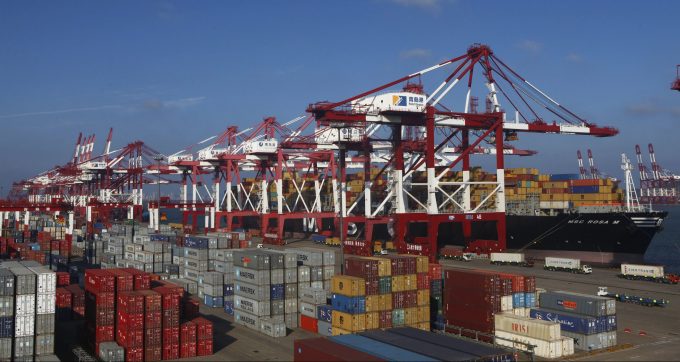Is the container supply chain crisis nearing its end-game?

To understand the disruption facing the container shipping markets at present, it’s insufficient to simply focus on the vessels themselves. MSI’s latest estimates for containerised trade growth in 2021 were 6%, above fleet growth of 4.5%. A 1.5 percentage point differential between supply and demand is scarcely enough to justify charter rates for an elderly panamax vessel hitting six figures.
Instead, the combination of port congestion, container shortages and wider supply chain disruption has driven supply/demand imbalances to the extent that MSI estimates the gap between effective demand and available supply to have been north of 15% in the past year.
In order to understand the prospects of the container market, then, a fuller view of the situation at ports and in the supply chain more generally is critical. We’d broadly break the problem down into three elements – the onward intermodal connections; the terminal itself; and then the shipping considerations. Other issues such as imbalances of container boxes were also relevant at the start of the supply chain crisis, but these are now less acute.
We believe these problems will ultimately dictate how the supply chain crisis is resolved, and consequently how long it will take for first the freight and then the charter markets to normalise. In short, until the landside issues are resolved, we don’t believe there will be a let up in the pressures on the containership market which are hurting shippers and proving so lucrative for liner companies and their tonnage providers alike.
The data was compiled by codifying the regular ‘traffic light’ operational status updates published by Korean liner HMM for a sample of four ports per region. It shows that, whilst in Europe there is evidence of the situation stabilising, in North America the message is more one of deterioration, with issues on the west coast now being replicated at east coast ports as well.
This picture of strain in North America is broadly borne out by data from the trucking industry, which shows that road freight costs have increased significantly over the course of the pandemic. More hearteningly, data from both Europe and the US show that these freight costs have reached a peak and, at least currently, are falling backwards.
Another element contributing to the supply chain crisis has been a shortage of storage capacity, both at the ports but also a lack of warehousing capacity and container storage inland. There are limited sources of quality data on warehousing, but the Logistics Manager Index (LMI) for Warehouse Utilisation remains at elevated levels, although it has actually come off somewhat since the middle of 2021.
The LMI also tracks the logistics industry’s perception of available transportation capacity more broadly – it shows that when the pandemic took hold in 2020 transportation capacity plummeted, but has since remained stable and actually increased over Q4. While the trucking industry continues to contend with high volumes, and structural challenges around the ongoing recruitment of truck drivers persist, this represents another piece of evidence suggesting that the road freight industry’s contribution to the supply chain crisis may be diminishing.
Taking the above into account and discounting the industry’s flirtation with airfreight, we don’t believe that the non-maritime elements of pressure on the supply chain will endure beyond the end of this year. The key question is whether this alone will be enough to normalise the wider container shipping industry.
Our suspicion is that it will be. In our base case analysis, over a million teu of capacity will be added to the fleet over the course of this year, which will help ease some of the vessel shortages, which coupled with increased vaccination of terminal workers and an unwinding of inland bottlenecks, should also resolve the logjam at ports.
There is still a lot that can go wrong (or right, if you are a containership owner) in this scenario. Firstly, the problems at US ports are deep-rooted and are, if anything, being compounded by new entrants to the liner market unfamiliar with how terminals operate. Conversations with terminal operators are rife with complaints as to the unprofessionalism of the non-traditional vessel operators.
Secondly, and more significantly, China continues to pursue a zero-Covid policy and given accounts that the Sinovac booster is far less effective against Omicron and a population that has no antibodies against Covid whatsoever, it is hard to see the zero-Covid policy being abandoned soon. This policy brings the likelihood of fresh port shutdowns in response to Covid outbreaks, as took place in Q2 and Q3 2021 in Yantian and Ningbo.
MSI’s base case forecast of normalising freight and charter markets towards early 2023 would certainly be imperilled should we see further port shutdowns. In our view, a repeat of the Yantian 2021 shutdown this year would stretch the disruption into Q2 23, although from next year onwards the relative impact of shutdowns will diminish as nearly 2.5m teu of containership capacity is expected to be delivered to the fleet each year over 2023/4 – sufficient buffer to allow the industry to absorb further port closures without driving freight rates back into the stratosphere.
This is a guest post by James Frew, senior analyst at Maritime Strategies International (MSI).
